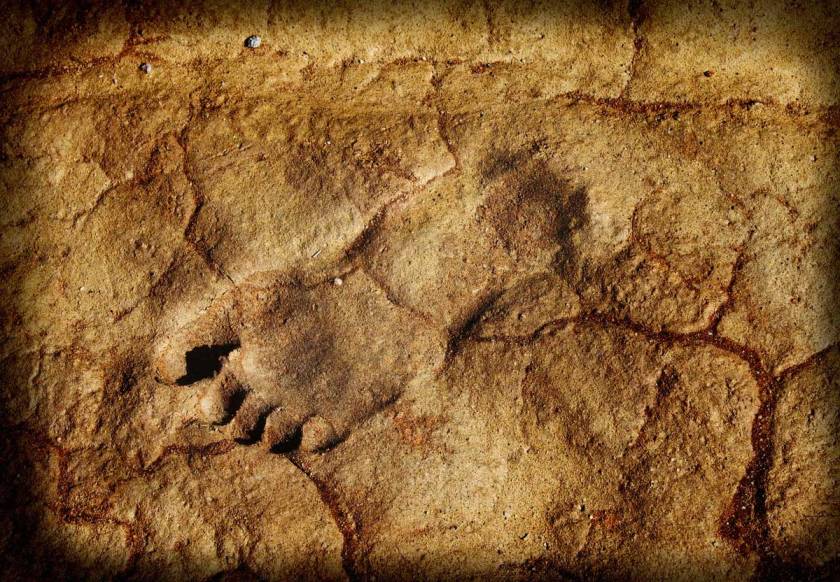After establishing settlements in Iceland and Greenland in the ninth and tenth centuries A.D., the Vikings reached what is now Newfoundland, Canada, around A.D. 1000. In the 13th century, the Inuit and Thule Norse hunted walruses in the high Arctic, according to a new study. Medieval walrus ivory may indicate trade between the Norse and Native Americans hundreds of years before Columbus, the study found.
A new study suggests that the persistent search for walrus ivory may have brought together two unlikely cultures – the Thule Inuit of the Arctic and the Norse of Greenland – hundreds of years before Christopher Columbus set sail.
By analyzing Atlantic walrus (Odobenus rosmarus rosmarus) tusks collected by Norwegian explorers in Greenland and later exported to Europe for trade, archaeologists have identified sites where Norse and Inuit populations likely overlapped, they reported in a study published Sept. 27 in the journal Science Advances.
The researchers also built and sailed Norwegian clinker-built boats to understand the long and dangerous journey the Norwegians might have made from southern Greenland to the high Arctic to hunt walruses.
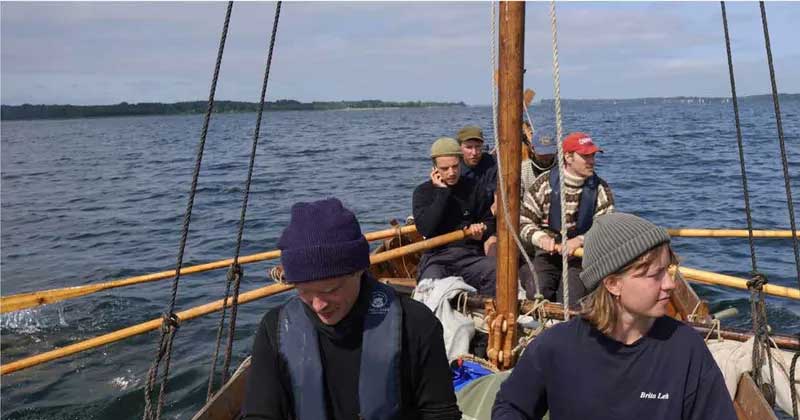
Greer Jarrett and colleagues sailed on reconstructed medieval Norwegian ships to understand their ability to navigate difficult Arctic waters. The small vessel had limited cargo capacity. Greer Jarrett
Archaeologists previously knew that Norse (or Scandinavian) settlers in Iceland and Greenland hunted walruses for ivory beginning around 900 CE, establishing a trading network that spread across Europe.
At the time, walrus ivory was considered gold, Live Science reports, and people used walrus ivory to pay church taxes. It was considered a very elite gift.
Ultimately, the Norse wiped out Iceland’s walrus population and were forced to sail to Greenland to keep the ivory flowing. Archaeologists assumed that Norse walrus hunting only occurred in southern Greenland, where they had settled. But in her 2024 dissertation, Ruiz-Puerta studied the genetic fingerprints of walruses across the Arctic and found that each population had a distinct genetic signature. This meant that if she could extract DNA from a walrus ivory artifact in Greenland or Europe, Ruiz-Puerta could pinpoint where it came from in North America and Iceland.
“What really surprised us was that most of the walrus ivory exported back to Europe came from very remote hunting grounds deep in the high Arctic,” Peter Jordan, a professor of archaeology at Lund University in Sweden and senior author of the study, said in a statement.
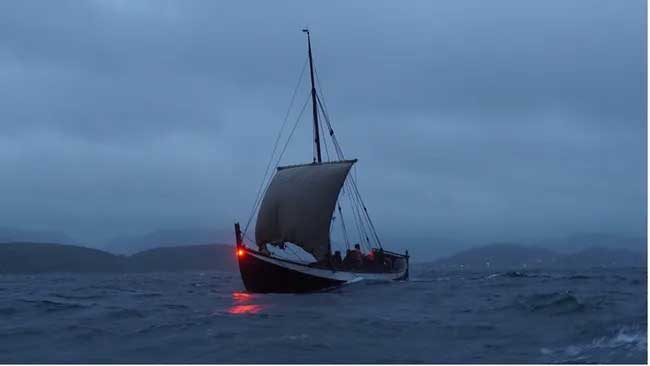
To test whether the Norse could have sailed north from southern Greenland to the Arctic Circle, archaeologist Greer Jarrett recreated and tested medieval-style ships. Greer Jarrett
By the 13th century, most walrus ivory samples were coming from sites hundreds of miles north of Norse settlements. For Norse traders to have access to walrus ivory so far north, they may have developed sufficiently sophisticated seafaring skills to survive in the ice, hunt walrus, and perhaps even trade ivory with the Thule Inuit, an indigenous people who lived in what are now parts of eastern Russia, the Canadian Arctic, and Greenland. Alternatively, the Norse may have remained in southern Greenland and traded with the Thule Inuit.
Also around the 13th century, the Thule Inuit had recently migrated to these same northern hunting grounds. They were experts in Arctic living and had developed sophisticated “switchable” harpoons that would latch onto prey, allowing them to hunt walrus in open waters. They might have supplied Norse traders with walrus ivory if the Norse had anything valuable to trade, the researchers suggested.
The study notes that there is no evidence that the Thule Inuit traveled far enough south to contact Norse settlements in Greenland. But it is possible that the Norse traveled north into the High Arctic to hunt walrus and interacted with the Thule Inuit there, the researchers suggest. To test this idea, study co-author Greer Jarrett, an archaeologist at Lund University, recreated and sailed on Norwegian boats to learn about the feasibility of travel and possible routes by which Norse explorers could have reached the High Arctic.
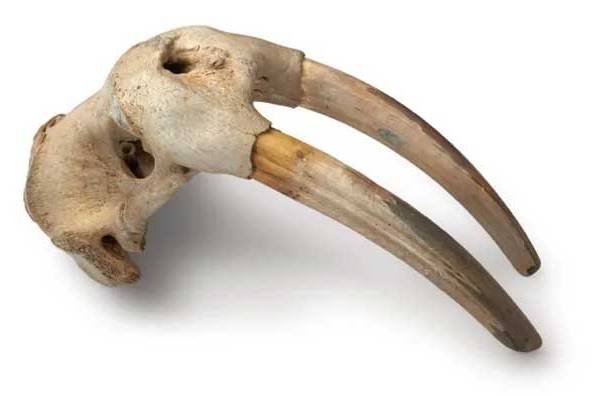
Ivory from Greenland and Iceland was often transported back to Europe without being removed from the walrus skull. Mikkel Høgh-Post
To make the journey, “walrus hunters likely left Norse settlements as soon as the sea ice retreated,” Jarrett said in a statement. “Those heading far north had a very narrow seasonal window in which to reach the coast, hunt walrus, process and store the skins and ivory on board their vessels, and return home before the seas froze again.” The Norse likely hunted hundreds of walruses in that short period and made the dangerous journey only once every few years, Ruiz-Puerta added.
The voyages of Jarrett and his colleagues helped them understand the capabilities of the Norse. Norse traders could sail hundreds of miles beyond the Arctic Circle, where they may have encountered the Thule Inuit, the researchers found.
It’s likely that the Vikings, who were mostly Norse, encountered Native Americans even earlier, in Newfoundland, Canada, where they arrived in 1021 A.D. It also seems likely that the Norse of Greenland encountered the Tuniit, who predated the Thule Inuit, the researchers wrote. For example, the researchers noted that a fragment of a brass pot was found at a Tuniit site in northwest Greenland. But if there is a possible connection to walrus hunting, contact between Native North Americans and Europeans may have occurred in the 13th century, about 200 years before Columbus landed in the Caribbean.
After establishing settlements in Iceland and Greenland in the ninth and tenth centuries AD, the Vikings reached what is now Newfoundland, Canada, around 1000 AD. They built an outpost at L’Anse aux Meadows and used it to explore other areas of northeastern North America, and historical records indicate that they established another outpost called “Hop” somewhere in what is now the province of New Brunswick.
The Viking outposts were sparsely populated when they came into conflict with the Native Americans. When the Vikings explored southern Newfoundland, in an area they called “Vinland” (which translates to “Wine Land”), they were more interested in finding natural resources they could exploit. Their real interest was in finding resources that could support a new Greenland colony.
Kevin P. Smith, a research fellow at the Smithsonian Institution who specializes in the Vikings, believes that the Norse texts indicate that “in the early decades of the 11th century A.D., there was interest in establishing a colony in the area known as Vinland.” Some Vikings believed that this offered “opportunities for the ‘second sons’ of the chieftain who founded the Greenland colony to establish their own areas where they could be leaders/chieftains rather than ‘second sons.’”
Christopher Crocker, a research grant specialist at Memorial University in Newfoundland who has done extensive Viking research, said he doesn’t think there’s enough evidence to show whether the Vikings wanted to establish permanent settlements in North America.
Smith said the medieval Norse sagas “make it quite clear that the reason they gave up trying to establish a colony in Vinland was that there were already many more inhabitants in that land than the Norse brought with them.” When the Vikings came into contact with the indigenous peoples of North America, conflict quickly erupted.
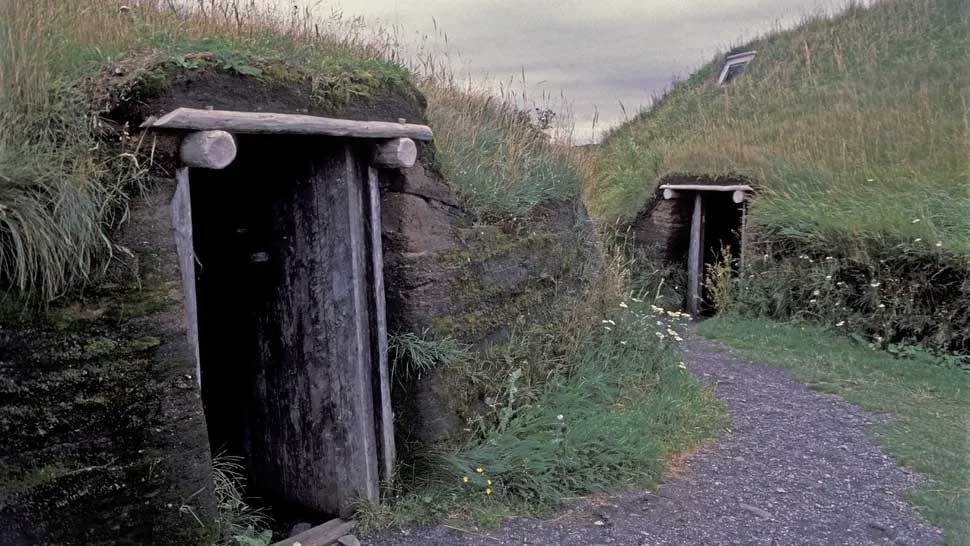
Replicas of Norse dwellings at L’Anse aux Meadows in Newfoundland, Canada. Wolfgang Koehler
The Saga of Erik the Red mentions a clash between Vikings and indigenous peoples that ended with the Vikings retreating to their ships after a defeat that left several Vikings dead. The group of Vikings fighting the indigenous peoples “now took the view that although the land might be chosen and good, they would always be under the threat of war and terror from those who had lived there before them. So they prepared to leave, intending to go to their own land, Greenland.”
The Vikings “who tried to establish a colony in North America were defeated, retreated and saw no opportunity to win or establish a stable colony in lands that were ideal for colonization,” Smith said.
It is unclear what the total number of the native population of Vinland was at the time of the Viking visit, but it was significantly larger. A 2010 article published in the journal American Antiquity estimated that the native population of eastern North America around 1500 was between 500,000 and 2.6 million.
The North Atlantic route used by the Vikings also presented an obstacle. “The relatively cold and stormy North Atlantic made it a higher obstacle than the more favorable conditions found further south,” Bill said.
Additionally, Scandinavia was less urbanized in the Viking Age than Europe in the post-Columbian era, and the states that the Vikings ruled were less developed. “State formation was much more advanced in the 15th century than it was in the 11th century, especially when you compare Scandinavia to the Iberian Peninsula,” Bill said, noting that “the more advanced states were able to invest more in colonization than the very young states of Denmark, Norway, and Sweden.”





